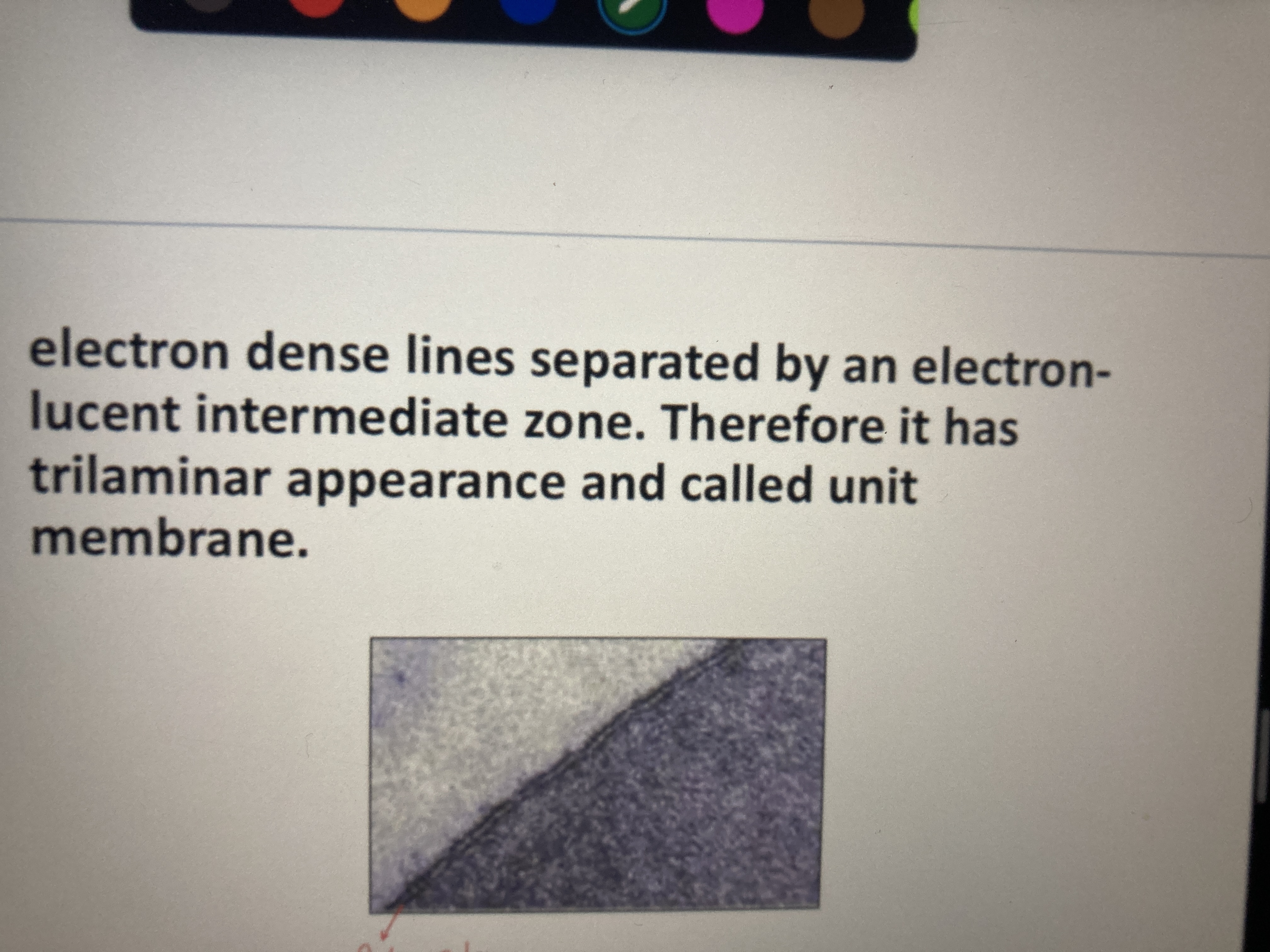What is the trilaminar appearance of a unit membrane and what does it consist of?

Understand the Problem
The text describes a structural characteristic of a biological membrane, specifically its trilaminar appearance due to the presence of electron dense lines and an intermediate zone. This suggests a focus on the composition and appearance of biological membranes, potentially in a biology or microscopy context.
Answer
Trilaminar appearance: two electron-dense layers (protein) and an electron-lucent layer (lipids).
The trilaminar appearance of a unit membrane, or cell membrane, is due to two electron-dense layers separated by an electron-lucent intermediate layer. This structure reflects the organization of phospholipids: two hydrophilic head layers sandwiching a hydrophobic tail layer.
Answer for screen readers
The trilaminar appearance of a unit membrane, or cell membrane, is due to two electron-dense layers separated by an electron-lucent intermediate layer. This structure reflects the organization of phospholipids: two hydrophilic head layers sandwiching a hydrophobic tail layer.
More Information
The trilaminar model captures the basic physical and chemical properties of the cell membrane, important for its function as a barrier and for communication.
Tips
Confusing the trilaminar structure with the semipermeable nature of the membrane.
Sources
- Trilaminar structure of cell membrane - sciencing.com
- Membrane Models | BioNinja - old-ib.bioninja.com.au
AI-generated content may contain errors. Please verify critical information